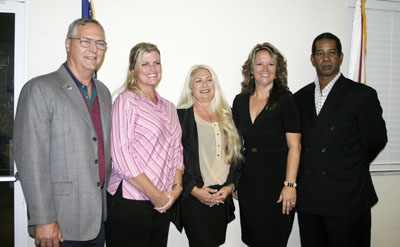In 3-2 votes, the Indian Trail Improvement District approved a $13.97 million budget for fiscal year 2015-16 on Wednesday, along with assessment rates calling for a small increase.
Operational expenses are estimated at $11.77 million, while debt service is $2.2 million.
Assessments will average $478.09 for all units, up 3.03 percent from $464.04 in fiscal year 2014-15; and $527.35 for active units, up 3.68 percent from $508.65 in 2014-15.
The board was presented with the proposed budget last month and held a public hearing on May 27.
Supervisor Gary Dunkley voted against the budget because he opposed the 3 percent increase and was against the addition of an administration employee. Supervisor Jennifer Hager also voted against the budget.
Drainage remains the top focus for the district, which has budgeted more than $1 million for canal improvements in 2016, including telemetry upgrades, purchase or lease of portable pumps, pump replacement or rebuilding, and projects approved as the board develops a comprehensive drainage plan.
Telemetry expenditures include $97,000 for the M-1 Basin structures and $65,000 for M1S improvements.
Canal improvements are ongoing for the fourth year, with efforts concentrated on the major east-to-west canals. The budget includes funding for equipment purchases allowing district staff to conduct canal excavation on an annual basis, as well as canal bank clearing by district staff, and a general contractor when safety comes in question.
Work includes $250,000 for slope repair on the south side of the M-O Canal, replacement of two gates at the Roach Structure at a cost of $16,000 and replacement of pipe sleeves at two locations along with M-1 Canal for $120,000.
The district will also rebuild two pumps at the M-1 Impoundment at a cost of $44,000, and rebuild a diesel backup pump and submersible pump at a cost of $32,000.
The board also learned that an agreement is near for a drainage pilot project from The Acreage to the Moss property northwest of the district.
Attorney Ruth Clements said letters had been sent to the South Florida Water Management District and the U.S. Fish & Wildlife Service asking for the drainage pilot project.
“We received letters back, and they were basically in agreement with us,” Clements said, adding that Fish & Wildlife had agreed to a lower flow rate than they had requested. “They came back and said they would prefer to start off with a lower rate of 5 to 15 cubic feet per second, as well as a detailed data collection, so we took this as basically saying they are in agreement with the pilot pump project, and we can go forward.”
Clements said that she and ITID Engineer Jay Foy had met recently with SFWMD representatives, who were impressed that the district is upgrading its telemetry, which will give it faster access and management to flood control structures, and said that the district should be in closer coordination with the SFWMD for better response to flood conditions.
“We can help them now, and they can help us, so we both have opportunities,” she said.
ABOVE: The Indian Trail Improvement District Board of Supervisors.








